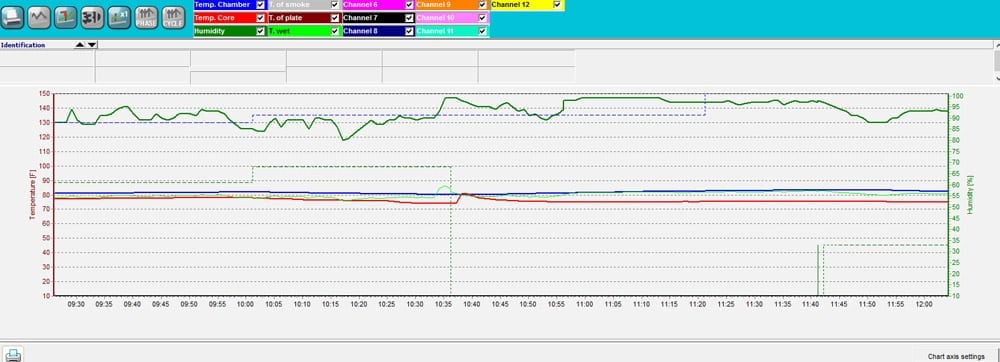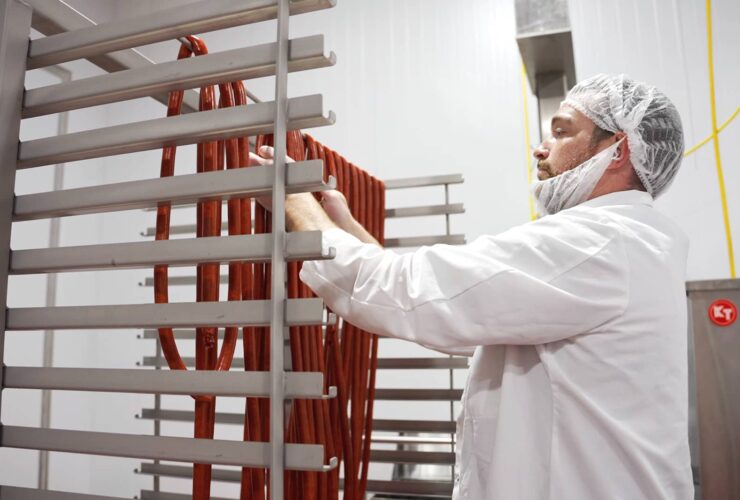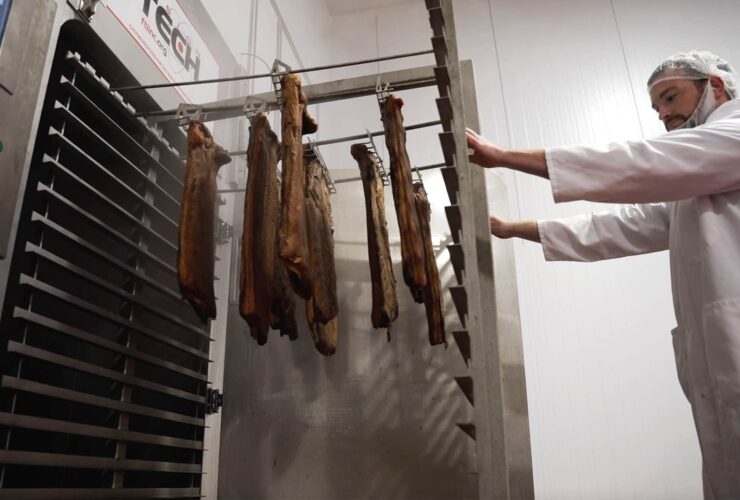An industrial smokehouse is only as good as the smokehouse controller that comes with it.
Think about it: your industrial smokehouse can be the most advanced piece of technology on the market, it can allow you to direct the breakpoint anywhere in the oven, it can increase product consistency and yields, but if the controller is difficult to use — or so outdated to be nothing more than dials and gauges — it will cause you more headache than it’s worth.
The smokehouse controller is the brains of your industrial oven and, as such, should be robust enough to not only easily control every aspect of your smokehouse, but should also track and report the status of your smokehouse.
Reporting Features in a Smokehouse Controller
In this world of data, statistics, and trying to prove ROI on every piece of equipment and every process, it’s a non-negotiable requirement for your industrial smokehouse controller to come equipped with reporting features.
But what features should your smokehouse controller include? Which are beneficial and which are nothing more than expensive, added fluff? We’re glad you asked!
Here are the 5 reporting features you should demand from your smokehouse controller:
Real Time Monitoring
This feature is a no-brainer. Any smokehouse controller you’re considering should at least come with real time monitoring. It’s the bare-minimum of reporting features.
Being able to see the temperature and humidity of the oven at any given point in time is essential to helping optimize your cooking process. Imagine if you were able to see at what exact point in the cycle time the oven got up to temperature and how long it stayed at that exact temperature. Or to see fluctuations in temperature. Or to tell when the oven has cooled down enough to remove product.
The real time monitoring report should include:
- Date & Time
- Cycle
- Cycle Time
- Chamber Temperature
- Core Temperature
- Humidity Percentage
- Set Cycle Time
- Set Chamber Temperature
- Set Core Temperature
- Set Humidity
Live Data Streaming Monitor with Historical Data
Much like real time monitoring, live data streaming allows you to see exactly what is happening in your smokehouse at any given point of time and streams that data to the smokehouse computer in an easy-to-understand graph.
But live data streaming on its own isn’t enough. As with any live streaming, once the time parameters have been met in the report, the data is lost forever.
That’s why your smokehouse controller should include historical data reporting — taking that live data streaming and archiving it so you can view and analyze the data later.
HACCP Monitoring
Being part of the food processing industry, HACCP monitoring of your smokehouse is a MUST!
HACCP (Hazard Analysis and Critical Control Point) is an internationally recognized system for reducing the risk of safety hazards in food. An HACCP System requires that potential hazards are identified and controlled at specific points in the process. This includes biological, chemical or physical hazards. Any company involved in the manufacturing, processing or handling of food products can use HACCP to minimize or eliminate food safety hazards in their product.
[clickToTweet tweet=”Your smokehouse controller should report on whether the oven got to the bacteria ‘kill temperature’ for the required amount of time.” quote=”Your smokehouse controller should report on whether the oven got to the bacteria ‘kill temperature’ for the required amount of time.” theme=”style6″]
Not only is this required when selling food product, but it will also give you peace of mind that you are not sending food product out there that might still contain bacteria that could lead to a product recall — and cost you time and reputation.
Alarm / Fault History Reports
There will be occasions when your industrial smokehouse incurs some kind of error — more specifically, when it doesn’t meet the parameters set for your specific needs.
A robust smokehouse controller will include a report of all alarm or fault histories on top of the audible alarm that goes off when parameters aren’t met.
Alarms can be set for any amount of parameters, including:
- Cook temperature isn’t reached in a specific amount of time (like an hour)
- Probe is not functioning
- High / low humidity
- High / low cooking temperature
- High / low blower housing temperature
- Fan not running
- No communication between the controller and the oven
- And much more!
These parameters (and any more you might choose) are critical to your operation, so a report that lists out all the alarms and faults that occurred in the oven will protect you and your product from danger.
Automatically Email Alarms and System Checks
Chances are, you don’t spend your days standing next to your smokehouse (or sometimes even within ear shot of an audible alarm) waiting to see if something goes wrong.
Receiving email alerts whenever an alarm goes off is essential to correcting any issues before they turn into bigger problems.
Some more robust smokehouse controllers will take the email alerts to the next level by offering alarm groups — emails sent out based on specific alarms and an amount of time the alarm has gone off without acknowledgement.
For example, say you set an alarm for when the blower housing temperature gets too high (which could be a sign of a fire). An alarm group could:
- Send an email to the operator if the alarm hasn’t been addressed in 5 minutes.
- Send an email to the operator’s supervisor is the alarm hasn’t been addressed in 10 minutes.
- Send an email to the owner if the alarm hasn’t been addressed in 15 minutes.
Ideally, the smokehouse controller would allow you to customize the alarm groups and their functions.
A Reporting Powerhouse
Reporting features are a must in any smokehouse controller you purchase. Reports give you the data needed to make informed decisions about your cooking process, submit reports to regulatory bodies, and give you peace of mind that your product has met all cooking requirements to kill bacteria.
Fusion Tech ovens come standard with a smokehouse controller with robust reporting features — all five of these must have features — that can be customized to your specific operation and needs. You can learn more about the controllers in a Fusion Tech oven by downloading the catalog below.





